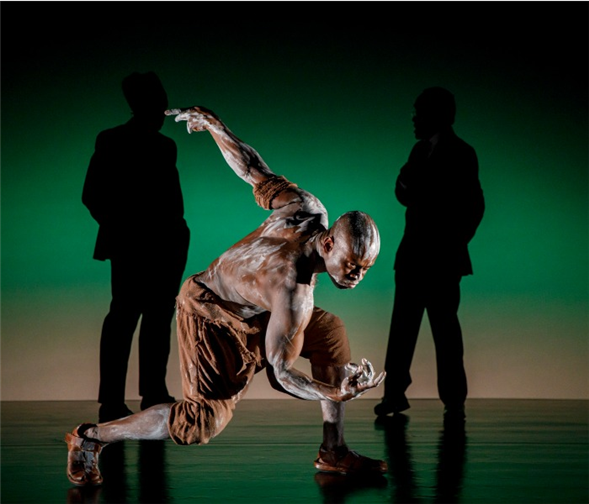Translate Page

Why director Jo Bonney has a dead animal haunt the characters in Mlima's Tale
---
In Lynn Nottage's world-premiere drama Mlima's Tale at the Public Theater, the title character is murdered in the opening scene. And yet Mlima -- a big-tusked African elephant portrayed by Tony nominee Sahr Ngaujah -- remains a central presence onstage throughout this cautionary fable about the illegal ivory trade. But that wasn't originally in the script -- it's an invention of director Jo Bonney.
"Lynn left a lot of room for any director to bring his or her interpretation to the piece, and from the moment I read it, I felt Mlima was the show's true protagonist," says Bonney, who previously collaborated with Nottage on By the Way, Meet Vera Stark. "For one thing, at the beginning of the piece, Mlima makes a powerful direct address to his family and the surrounding community, warning them how to react to his death, which is something elephants do nonverbally in real life. And since I have been to Kenya and seen these creatures, I had pictures in my head of these great elephants. Their magnificence is amazing, and you get a real sense of how small you are when they are around."
Unfolding over 16 short scenes, the play by two-time Pulitzer Prize winner Nottage (Sweat, Ruined) chronicles the journey of Mlima's tusks and the many people involved in their illegal trafficking. "I think Lynn has always been aware of the chasm between economic classes in the world, but her point here is that we are all complicit in what happens to Mlima," says Bonney. "Especially in America, we have the money to buy whatever we want from other countries, whether it be coffee or something else. And although this particular story is clearly about the global ivory trade, the bigger picture we tried to paint was about how Africa has been pillaged, and the power difference between our two worlds. Every day, the more privileged among us indulge in greed and do it without thinking."
{Image1}
To highlight this idea of communal guilt, Bonney decided that Mlima should not only be visible in every scene, but also leave a literal white mark on every character involved in his exploitation, from brutal poachers to corrupt government officials to avaricious collectors. "Using a clay-based makeup for the mark was my idea, because it was such a visually strong metaphor," says Bonney. "When Lynn and I first met, she showed me a picture of an African dancer who used this sort of powder, and I also looked at photos of Butoh dancers. I realized this powder represents the transformation from being dead to a sort of living spirit, and once I had that idea, I decided I could run with it. Of course, we really had to be sure the powder was something Sahr would be comfortable wearing and that the wardrobe department could clean from each costume after every show."
Bonney admits her concept might not work as well without Ngaujah's stunning physical performance. "I knew I wanted him for this role," she says. "Although we've never worked together, I had auditioned him for other shows and I had seen him onstage in Fela! and the recent Signature Theatre revival of Master Harold…and the Boys. It's obviously no small feat to bring such a giant presence to the stage with so little text -- Mlima doesn't speak again after that opening scene. And one of my biggest challenges was how to convey the enormity of these tusks to the audience. It's one reason all the actors keep their distance from Sahr, to give the sense of their extraordinary scale."
Bonney also ensures that all of the show's 20 other characters -- played by the versatile Ito Aghayere, Jojo Gonzalez and Kevin Mambo -- make an impact. But Mlima is the one who lingers long after the cast bows. "Lynn made sure that each character serves a specific purpose and is also identifiable as a real human being, and I wanted to honor that," says Bonney. "Still, I believe it's so important for audiences to understand that what we're really tracking is the story of Mlima."
To read about a student's experience at Mlima's Tale, check out this post on TDF's sister site SEEN.
---
Brian Scott Lipton has been covering theatre and the performing arts for 30 years. Follow him on Twitter at @bsl1436. Follow TDF at @TDFNYC.
Top image: Sahr Ngaujah in Mlima's Tale. Photos by Joan Marcus.
TDF MEMBERS: Go here to browse our latest discounts for dance, theatre and concerts.